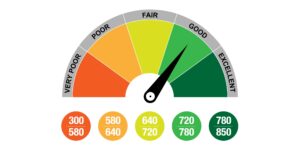Monthly Newsletter | Jan 2022 | Issue 116
Featuring
- Digital Debt Collection for Mitigating Risk and Improving Customer Experience
- Optimize credit management to enhance business performance
- In the News
- Major Events
Focus On

Alleviating collection risk and elevating customer experience: Tips to Lenders
While financial enterprises have been in the digital race lately, the industry hasn’t been able to efficiently leverage technologies in default management and subsequently improve efficiency and customer experience. In the post COVID-19 world, loan delinquency has increased at an alarming rate. Here we’ll discuss how lenders can bridge this gap by effectively mapping customer segments, helping collection agencies and lenders gain some traction on data and get insight as to what motivates individuals to pay or default their outstanding debt. the concept of using digital debt collection methods to effectively manage and reduce collection risk while simultaneously improving the overall customer experience.
Traditional debt collection challenges
Traditional debt collection is driven by focus on delinquent accounts. Led by aggressive targets, the priority is to ensure the repayment of as much of the outstanding debt as possible. Traditional debt collection methods may be putting the relationship with the entire portfolio of delinquent accounts at risk due to lack of understanding of customer behavior and inaccurate risk segmentation.
In most cases, the intensive collection strategies are just measures to overcompensate for unknown and perceived risks posed by the ever-increasing delinquent portfolio. At the core of this problem is the inability to identify risk accurately. This is a big gap and the reason for the phenomenon, primarily, lies the inhibitive cost of conventional methods of risk modeling that a lot of times overweighs the returns. Additionally, there are costs associated with model governance and maintenance of the model.
Top challenges:
1. Lack of customer data
2. Increased burden of regulations
3. Failure to track and reconcile accounts
4. Inability to execute
So, how lenders can focus on reducing delinquencies and loss due to charge offs but without compromising customer experience.
Solution : Digital Debt Collection
AI revolution in debt collection
Accurate customer risk segmentation achieved with the help of AI helps financial organizations enhance customer experience with personalized collection and communication strategies. The growing use of AI and Machine Learning is ushering in a new era in debt collection, one that includes an early warning for delinquency, refined methods of categorizing borrowers and optimized strategies for customer engagement to reduce defaults.
AI and ML can transform the debt collection practice in two ways:
(a) Embedding intelligence into their collection strategies
(b) Enhancing contact strategies through intelligence
Digital debt collection strategies
Early warning system: Advanced AI/ML analytics will translate some insights into actions such as identifying early potential defaulters using predictive modeling, notifying collectors to check on at-risk debtors proactively and provide credit counseling support, and restructuring payment plans.
Categorizing borrowers: Debt collection strategies can be modified using insights based on customer’s demographic and socio-economic data, salary, occupation, and historical interactions. This will ensure the right channel and follow-up actions where you will probably get a positive response.
Optimized customer engagement: Artificial intelligence solutions with automation bots can carry out smart dialogues between businesses and customers via email, SMS, or any social media platform. This will enable collectors to reach exactly where the customer logs in several times a day and can pay the outstanding debt online, resulting in faster delivery of receivables
Being risk positive with Insight Consultants
Insight Consultants solution can help you accurately identify customers in different risk categories early in the cycle and follow up by creating personalized resolution strategies, considering the financial disposition and behavioral aspects of the borrower. This will help in striking an early deal, thereby reducing the inconvenience and hassle the customer go through.
Key benefits of our solution
Reduced delinquency rates and charge offs: Through early delinquency prediction models clients can create proactive plans and prevent delinquencies
Enhance Customer Experience – Personalized recommendations for time, channel and tone of communication with the borrowers along with recommendations into right resolution strategy ensure most desired outcomes for both borrower and the lender
Improves Operational Efficiencies– Improve process efficiencies, productivity and compliance, based on intelligent prioritization of accounts along with prime time recommendations
Intuitive Experience – Visualize key insights with the help of configurable dashboards
Hyper personalization– Understand personality traits, negotiate and connect well with customers, based on analysis of e-mails, texts, public posts, blogs and tweets
Efficient recovery strategy – ML-based prioritizations help focus on accounts with higher likelihood of recovery and suggest appropriate channels and time for contact
With a looming risk of financial meltdown of the economy, the financial institutions will soon find themselves in the dilemma of having to choose between managing the risk and minimizing losses vs customer experience.
Insight Consultants can help achieve the balance between alleviating risks and elevating customer experience and create an edge over the competition.
Keep Reading

Optimize Credit Management to enhance Business Performance
COVID-19 pandemic continues to affect the global financial sector and the damage to businesses and economies is becoming more visible every day. Countermeasures taken to contain the virus and save lives stopped the economy from functioning. With business slowly restarting, lending institutions are faced with a new and unfamiliar environment, in which they must evaluate and monitor credit risk with limited visibility and access to reliable data.
Lenders and SMEs need to empower their staff with contemporary tools and process frameworks and offer superior digital services to address customers’ on-demand and customized credit needs and mitigate business risks. Customers demand immediate and customized credit solutions. On the other hand, lenders need to minimize losses and business risks.
Since vulnerability to credit continues to be the prime risk factor for the financial industry worldwide, lenders should take special initiatives in strategizing comprehensive measures to identify, monitor, and control the inherent risks in lending as best as they can. Firms should be geared to address two facets of credit management-customers unique financing needs and business profitability risks.
Changes in the Credit Risk environment triggered by COVID-19
1. Increase in bad loans
2. Changes in creditworthiness at sector and subsector levels
3. Elevated delinquencies and credit losses across lending portfolios
4. Hard to differentiate between borrowers in the same sector or subsector
5. Pertinent data on crisis conditions are scarce, lagging, and not fed automatically into decision making
6. Strained cash flow and liquidity constraints
7. Increase in call volumes and customer complaints
Adjusting to new dynamics in Credit Risk Management
From the perspective of financial institutions, the conditions that the COVID-19 crisis triggered have specific implications for managing and mitigating credit risk.
Data and analytics capabilities are proving essential to the solution. Accelerate digital transformation to enable real-time monitoring and effective mining of transaction data, while automating the feeding of results into decision making.
The current crisis calls for a review of the existing acquisition policies, strategies, and cutoffs to manage emerging risks and provide ongoing credit to customers. The actions by businesses during these times will inspire future customer loyalties, help gain market share, and mitigate reputational risk.
Proactive credit risk management improves an organization’s ability in effective decision-making. It helps to build an understanding required to measure and manage emerging risks which gives organizations a better view of tomorrow’s risk and how it impacts their business.
Reassess collection strategies with a focus on enhanced monitoring and updated segmentation. Data analytics, including monitoring, strategy, and model enhancements can drive informed collection actions during these times.
Towards digitization of business process
The ever-changing, heavily regulated, and competitive landscape of the lending sector demands solutions that are highly flexible and will provide organizations with the kind of operational agility required to not only achieve business objectives but also ensure regulatory compliance. The digital transformation of existing credit risk tools, processes, and systems can address rising costs, regulatory complexity, and new customer preferences. The unique features of the pandemic-triggered recession have led SMEs to move more quickly to build real-time data and analytics into their credit-decision engines. The digital enablement of credit risk management means the automation of processes, a better customer experience, sounder decision making, and rapid delivery.
Insight Consultants approach
At Insight, we provided end-to-end support for the COVID-19-related impact and ensure smooth credit management. This includes,
1.Flexible and configurable credit checklists, applications, scoring models, credit policies, and rule-based, manual or automatic recommendations
2.Visual dashboards to monitor loan portfolio
3.Digital channels for payment reminders
4. AI embedded process automation solution to monitor internal and external data, and determine the possibility of any risk
5. Granular segmentation, and personalized dynamic treatment optimization
Act now
The COVID-19 pandemic has created great uncertainty regarding the future of the economy. Financial firms need to rise to the occasion and proactively implement best practices in credit risk management to navigate through these times.
Lenders who respond to today’s challenges with speed and flexibility, while keeping in mind customers’ needs during these unforeseen times, are the ones who would be top-of-mind customers as they think of their credit needs in the future. Keeping an eye on the medium-and-long term capability enhancements necessary to best serve customers in the post-pandemic world is imperative.
Get insights to stay ahead in lending industry
Insights delivered monthly !
Subscribe
In the News
Investree collaborates with Netbank to stimulate Filipino SME recovery
Investree’s SME clients are set to benefit from additional funding as a direct result of the B2B lending marketplace’s recent collaboration with the Filipino BaaS platform Netbank.
Investree has reinforced its commitment to supporting the development of Filipino SMEs through its collaboration with Netbank; which operates in the Philippines.
Through the collaboration, Netbank will allocate funds for Investree clients to support the initiatives that will be carried out in 2022, further contributing to the economic growth of the Philippines. These additional funds will be utilised to create new jobs and expand business growth, which Investree will continue to connect SMEs to institutional investors.
Although it already serves the SMEs on the Filipino island of Luzon, reports state that Investree is awaiting an SEC permit to extend the reach of its operations to the regions of Visayas and Mindanao, which will take the service to nationwide status.
Co-Founder and CEO of Investree Philippines, Kok Chuan Lim, comments: “Investree Philippines is very excited to have onboarded Netbank as one of our first institutional investors in the Philippines. We have been working with the team at Netbank since we obtained our license earlier this year to jointly develop services that will improve ease of use for our SME issuers and reduce credit risks for our note investors. I am confident that our partnership will further enhance the adoption of crowdfunding as a viable working capital source for our SME clients.”
SMEs form the economic backbone of the Philippines, and account for 99 per cent of registered businesses whilst providing about 60 per cent of jobs across the country. The Covid-19 crisis has taken a huge toll on these vital small companies, and many businesses had been affected by lower sales and difficulty accessing inputs to reduced logistics services and clients not paying bills.
To help SMEs recover, Investree and Netbank are collaborating to expand the loans to this critical sector. Providing account opening services and investing in crowdfunding services will allow Investree clients to finance their trade receivables, giving SMEs cash to accelerate their growth. This partnership also allows Investree to accelerate its growth and ultimately serve the underserved SME market.
Furthermore, SME lending is very underserved in the Philippines. SME loans as a percentage of GDP is approximately 3 per cent, compared to 37 per cent in Thailand and other countries in the region.
As a result, SMEs struggle to grow, slowing job creation and economic development. Through collaboration and digitalisation in unlocking the potential of SMEs would allow them to rapidly expand their impact. In addition, the collaboration between Investree and Netbank can also contribute to accelerating financial inclusion within the country.
Netbank Co-Founder and Head of Operations, Jaymar G. Mendoza, comments: “Together with Investree, we hope to support the efforts in increasing financial inclusion within the country which is aligned with our aim which seals our partnership as well. We aim to combine both expertise and flexibility that banking and fintech has to offer to create more impact for the market. The partnership between a regulated bank and an alternative lender is very powerful wherein the Banks bring balance sheet management experience and processes and the alternative lenders bring a deep understanding of their clients.”
Kok Chuan Lim added: “With the support from Netbank, Investree Philippines will be harnessing the expertise and power of technology to give SMEs vital cash to accelerate their growth to increase financial inclusion and ultimately help the Philippines’ economy. Also, we would like to equally serve all the SMEs in the nation, therefore, inquiring about the permit to operate Visayas and Mindanao will allow us to do that. We would like to keep innovating and include more businesses in the Philippines.”
Physical fake is prevalent across Fintech: says Sumsub 2022 predictions
Sumsub, the tech company that fights money laundering and online fraud, has released the results of its identity fraud study while making predictions for the upcoming year.
Analysing 6,000 document types from 220+ countries and territories, the research was conducted between 2020 and 2021 and addressed the prevalence of identity fraud within various industries, including banking, crypto, trading, and gambling.
The study revealed that over 65 percent of identity fraud occurs during ID checks. Other fraud-prone verification stages include biometric checks (seven percent of fraud), proof of address checks (five percent), and selfie checks (one percent).
Over 60 percent of fraudsters use physical fakes to trick the verification system, while digital forgeries are used by less than 15 percent. In a third of cases, fraudsters forge physical documents from scratch; whereas in 22 per cent of cases, they tamper with a valid document.
“Fraud rates aren’t going to decline. This is an eternal game of cat-and-mouse: criminals come up with new fraud techniques, and we learn to catch them. The biggest danger is deepfakes. At present, it’s difficult for an ordinary person to make a high-quality deepfake—but soon, I’m afraid, technologies will reach the point where everyone can make a realistic deepfake on their phone in two seconds. We must not lose our vigilance and work ahead of fraudsters,” says Vyacheslav Zholudev, Sumsub’s co-founder and Chief Technical Officer.
The report also highlights the prevalence of fraud in the banking, crypto, trading, and gambling sectors. In the banking sector, more fraud was committed during the winter holidays. The crypto fraud rate spiked in November 2020 and then gradually decreased, while the trading sector saw a double peak in late 2020/early 2021. In the gambling sector, the fraud rate remained stable overall.
It also turns out that fraudsters are becoming more skilled. Sumsub’s data suggests that 35 per cent of all fraud attempts are initiated by fraudsters using advanced forgery techniques, and the company expects this figure to rise in the future.
Sumsub concludes with several recommendations to help companies avoid identity fraud. Accordingly, the most effective way for businesses to stay safe is to screen for complex fraud schemes at different onboarding stages. It’s also essential to consider specific red flags, including suspicious email domains and IP addresses.
Kabbage® from American Express launches Kabbage funding to help small business
Kabbage from American express launched Kabbage Funding™ offering eligible small businesses flexible lines of credit between $1,000 and $150,000-now with the powerful backing of American Express. With Kabbage Funding, small businesses can apply in minutes to access working capital 24/7 to help manage their company’s cash flow.
Most small business owners start a company to pursue a passion, not to spend time managing their cash flow and balancing their books, said Kabbage Co-founder and Senior Vice President at American Express, Rob Frohwein.
The launch of Kabbage Funding builds on American Express’s momentum to go beyond the Card and become an essential partner to small busineeses through a broad range of cash flow management tools. Kabbage Funding is a business line of credit offered by American Express that approves customers by analyzing their business data in real-time, and adds to its new suite of products, including Kabbage Checking™ launched in June 2021. Building on its efforts, American Express has also begun offering Kabbage payments ™ to eligible customers, which will be more broadly available in 2022, and makes it simple for small businesses to accept card payments and get paid quickly. American Express’s products from Kabbage are designed to work together. When connected to its digital cash flow platform, the tools are built to help small businesses borrow funds, make deposits, earn 1.1% APY1 on checking balances up to $100,000 pay vendors, and streamline cash-flow management-all at their fingertips from a single provider.
Now available to eligible US small businesses to apply online, Kabbage Funding helps simplify the process of seeking working capital and has: No application fees, No origination fee, No annual fees, No monthly maintenance fee.
US small businesses can apply in minutes for Kabbage Funding by connecting their business accounts online to analyze their business information real time. Persistent data connectivity helps Kabbage continuously review a customer’s eligibility and ensure they have the right amount of funding available to them at the right time, based on their latest business performance.
Once approves, small businesses do not need to reapply to access their line of credit, not asl for approval to draw funds. Eligible customers may have the option to choose between a 6.12, and 18-month loan term, can take out more than one loan at a time, and do this as often as they need up to their approved amount. The result is a funding solution designed to let small businesses quickly access the exact amount of funding they need it, 24/7, and only pay for the funds they borrow with no pre-payment penalties if they choose to pay back the loan early.
To be eligible to apply, US small business must be in business for at least one year.Small businesses may learn more about Kabbage Funding and apply either at www.kabbage.com/funding or via the Kabbage mobile app available in the App Store® and Google Play™. All Kabbage Funding loans are issued by American Express National Bank.
EU Banking profitability above pre-COVID levels: says Watchdog
Banks in the European Union became more profitable in the third quarter of 2021, with government support during the pandemic helping to push down the number of loans that turn sour, the EU’s banking watchdog said.
“Asset quality has further improved, but there are concerns for loans that have benefited from moratoria and public guarantee schemes not least due to general uncertainty due to Covid-19 variant, Omicron,” the European Banking Authority said in its latest quarterly “risk dashboard”.
“Profitability has stabilised at levels above those seen before the pandemic. The majority of banks expect a rise in operational risks mainly due to elevated cyber risks.”
The non-performing loan (NPL) ratio of loans that turn sour, fell 20 basis points quarter-on-quarter to 2.1%, while return on equity, a key measure of profitability, was 7.7%, up from 2.5% in the same quarter in 2020, and 5.7% in the third quarter of 2019.
The core ratio of capital to risk-weighted assets in the third quarter of last year was 15.4%, down 10 basis points on the prior quarter but still well above regulatory requirements, EBA said.
The EBA findings are based on a sample of 131 banks covering more than 80% of the EU’s banking sector assets.
Events
Nexus Fintech
7-8 Feb 2022, Loews Miami Beach Hotel, 1601, Collins Ave, Miami Beach, USA.
Insight Consultants are focused on making level the rough roads that exist in the lending industry. We serve customers globally from our offices in the US and India.
Contact Us








